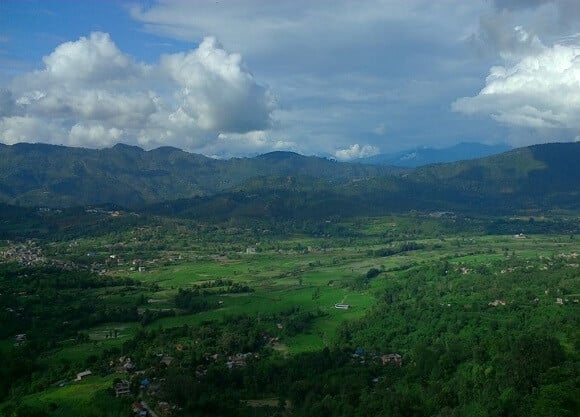
Measuring the magnitude of distress in children
February 07, 2017

February 07, 2017

“If I were there, I would be scared,” said Adhikari, a second-year student in the Frank H. Netter MD School of Medicine.
The earthquake killed 9,000 and injured an estimated 22,000. It was the country’s worst natural disaster in nearly a decade. Aftershocks happened every 20 minutes, including one with a magnitude of 6.7.
“I always wanted to do something in Nepal,” said Adhikari, who moved to the U.S. in 2007 when he was 19. “My family wasn’t well off. I saw a lot of difficulties while growing up, and I wanted to do something meaningful for the community.”
He returned to Nepal in 2016 to study the psychological and social effects of the 2015 earthquake on schoolchildren, a capstone project he developed from the lessons learned in his Global Public Health class. Using the standardized mental psychological distress inventory to screen for emotional distress, he tested four schools: two near the epicenter of the quake in Sindhupalchok and two near Kathmandu farther away.
At first, he was concerned that teachers would not want to participate. “But they were all so supportive. They had seen students who were suffering because of it,” he said. They commended him on his efforts to do something about the situation. It was a challenging time for both children and adults. Following the quake, his family in Nepal lived for two months outside of their house. “They were worried that the house would crumble and fall on them,” he explained.
Adhikari is still culling the data, but thus far, he has found 62 percent of the students at the schools closer to the epicenter were affected, compared to 32 percent at the Sindhupalchok schools. While the results aren’t surprising, this data can be used to raise awareness about the needs in this community. He plans to present his findings to the government of Nepal.
While in the country, he also presented educational workshops on the signs of depression to help eliminate the stigma associated with the illness. Adhikari plans to return to Nepal for other projects including one to increase access to prenatal care in rural areas. The positivity of the Nepalese people has inspired him.
“The earthquake devastated the country, but still, people are trying to make a normal life,” he said. “Natural disasters are part of our world. We can’t change what happened, but we can make the best of what we have.”
Quinnipiac Today is your source for what's happening throughout #BobcatNation. Sign up for our weekly email newsletter to be among the first to know about news, events and members of our Bobcat family who are making a positive difference in our world.
Sign Up Now